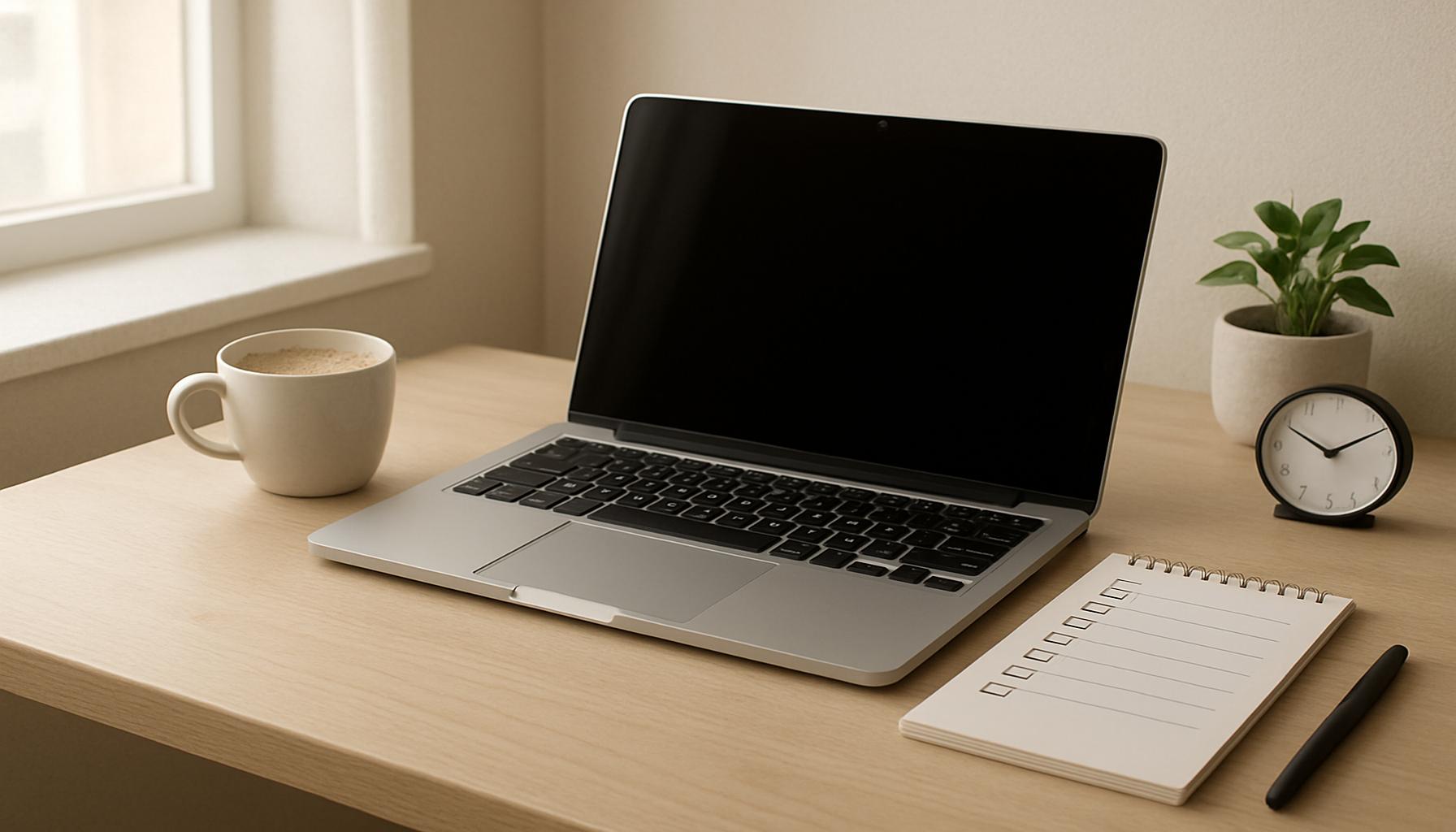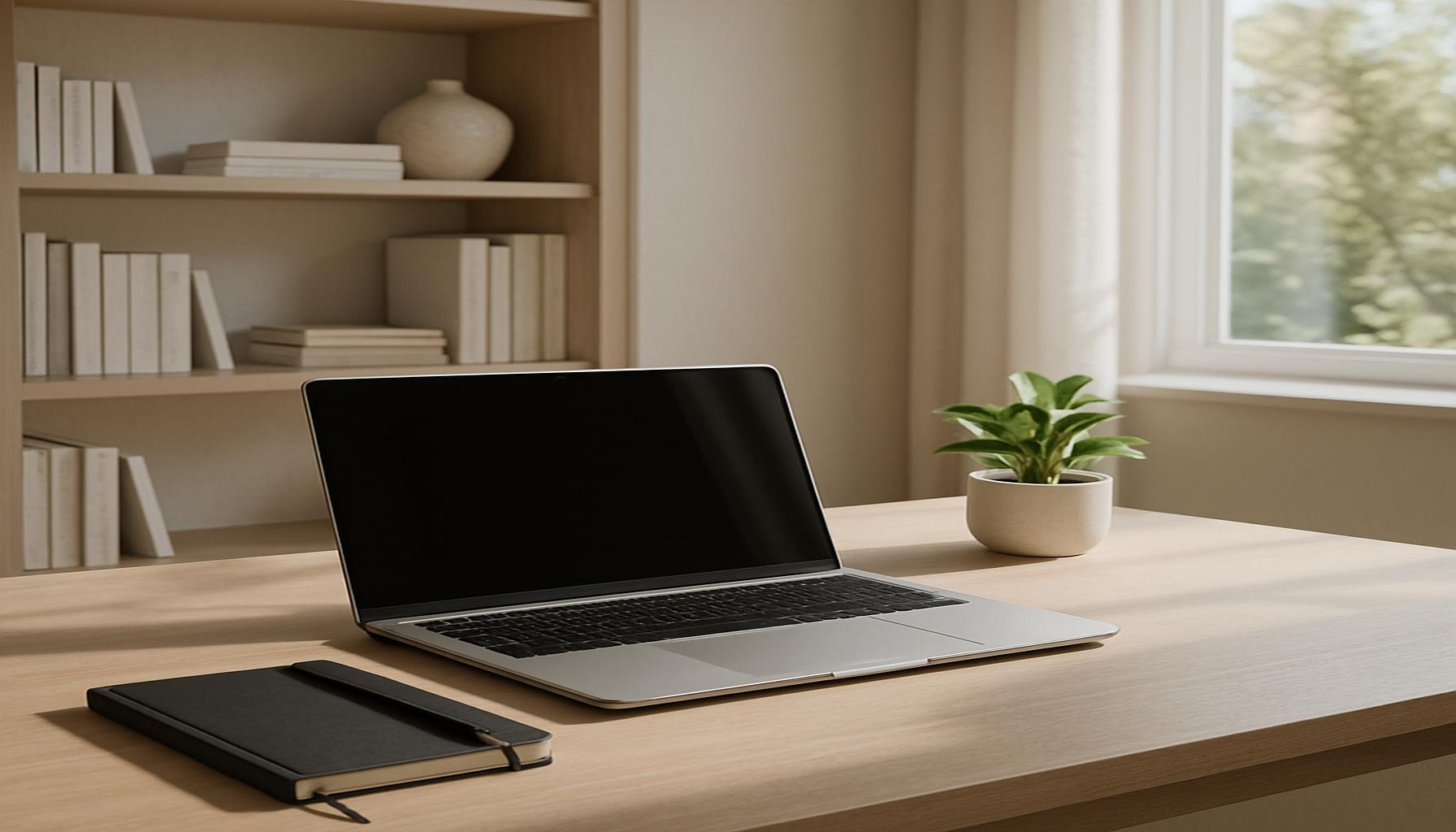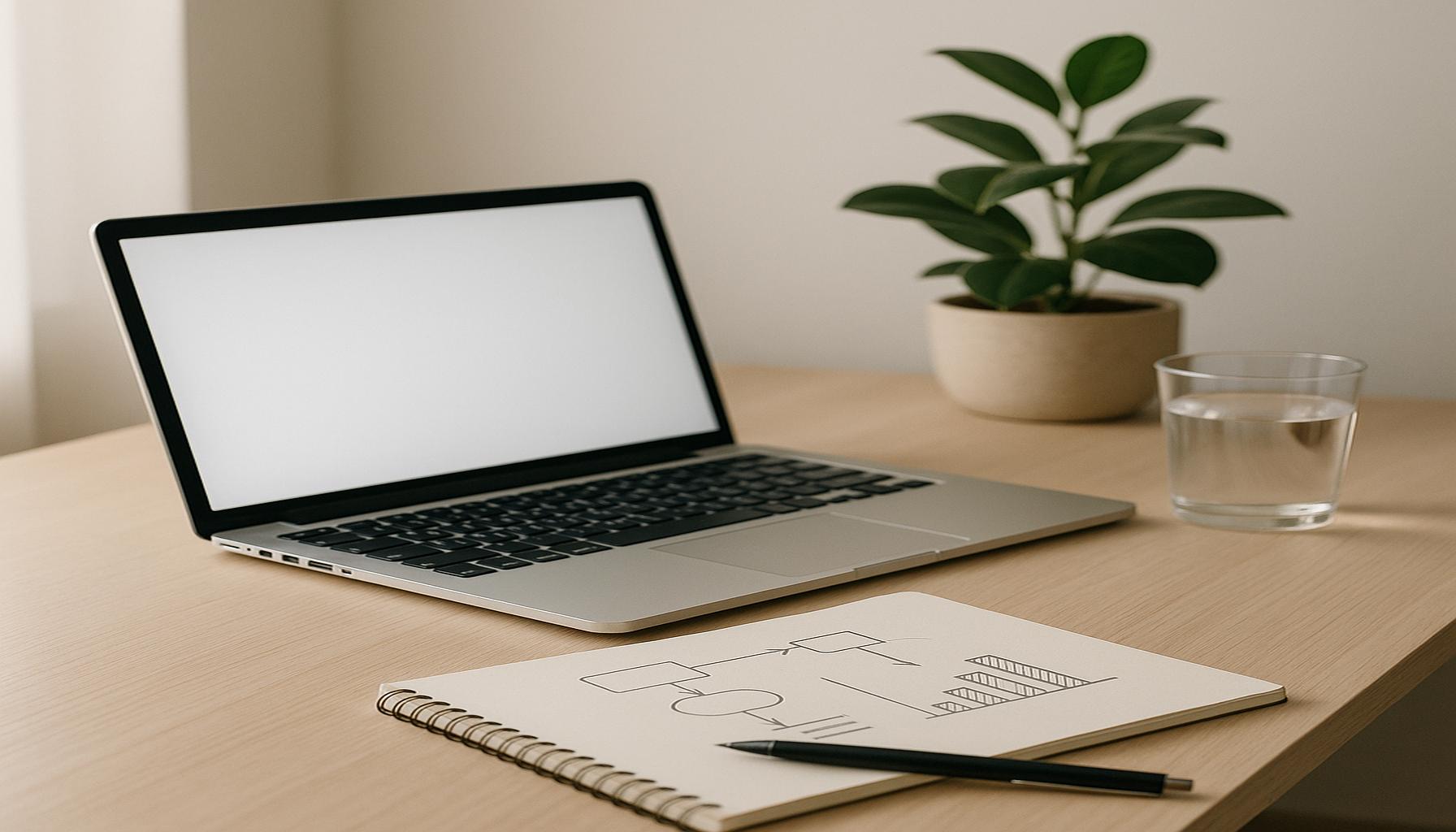Creating a Minimalist Workspace: How Simplicity Can Boost Your Creativity and Efficiency
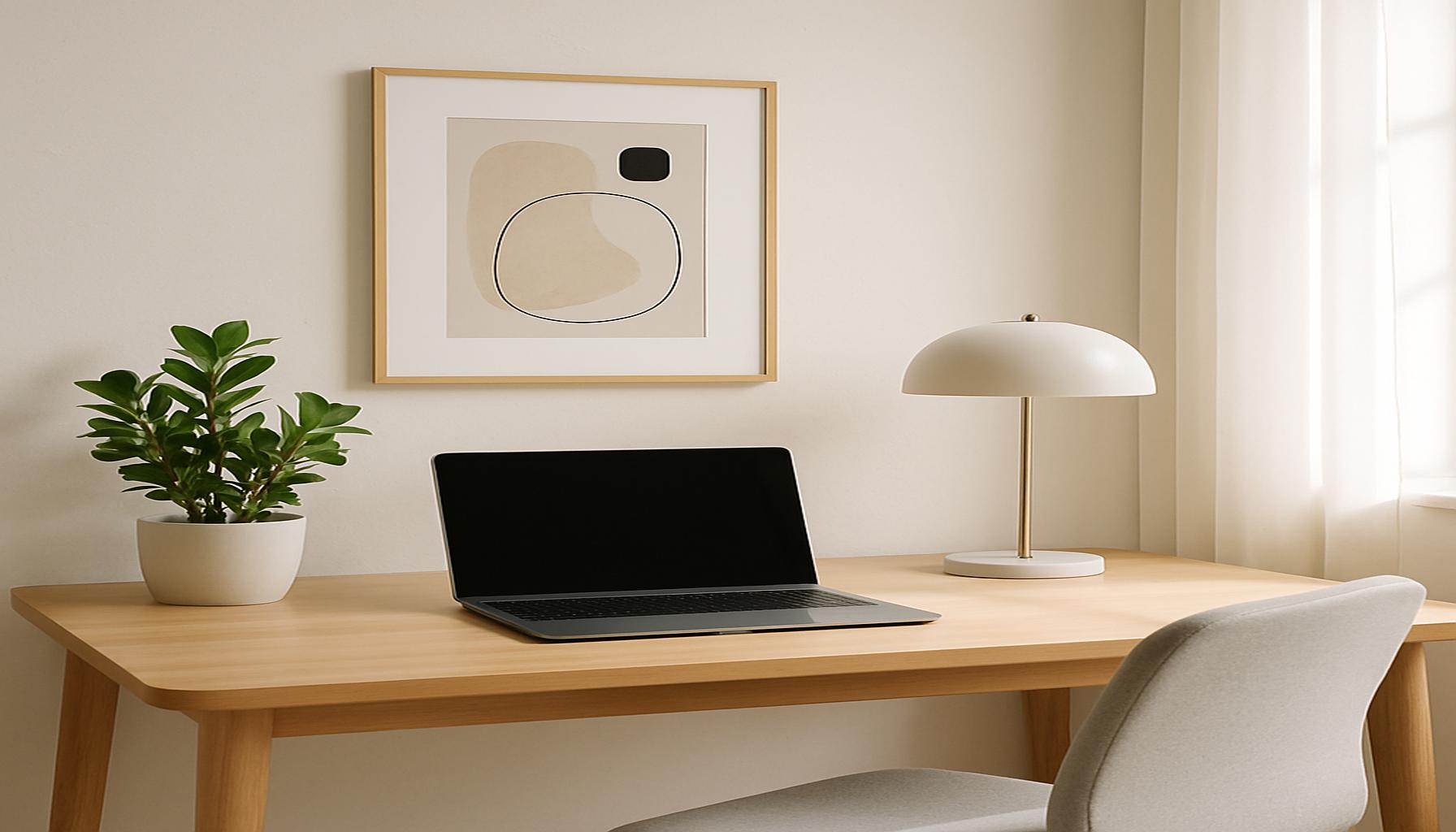
Understanding Minimalism in the Workplace
In today’s fast-paced world, the clutter around us can lead to overwhelming distractions. A minimalist workspace promotes clear thinking, creativity, and efficiency by embracing simplicity. But how does creating a simple environment impact your productivity levels?
The Essence of Minimalism
Minimalism is more than just a design choice; it’s a lifestyle shift aimed at prioritizing the essential over the excessive. This approach incorporates various key features within a workspace. First and foremost, consider decluttered surfaces. Removing unnecessary items not only helps in focusing on what’s essential but also reduces the cognitive load associated with clutter. For instance, having just the tools and materials needed for your current project visible can streamline your thought process and lead to a more productive session.
Thoughtful design is another critical aspect of a minimalist workspace. Each piece of furniture and equipment should serve a purpose, contributing to your workflow rather than hindering it. For example, opting for a desk with built-in storage can keep your materials organized while also saving space.
Furthermore, incorporating natural elements into your workspace, such as indoor plants or natural lighting, can significantly enhance your mood and creativity. Research has shown that exposure to greenery can improve focus and lower stress levels, making it an essential addition to any minimalist setting.
Studies indicate that a clean and organized space can improve concentration and reduce stress. A minimalist workspace encourages a more intentional approach to daily tasks while also allowing the mind to wander and explore new ideas without the burden of visual chaos.
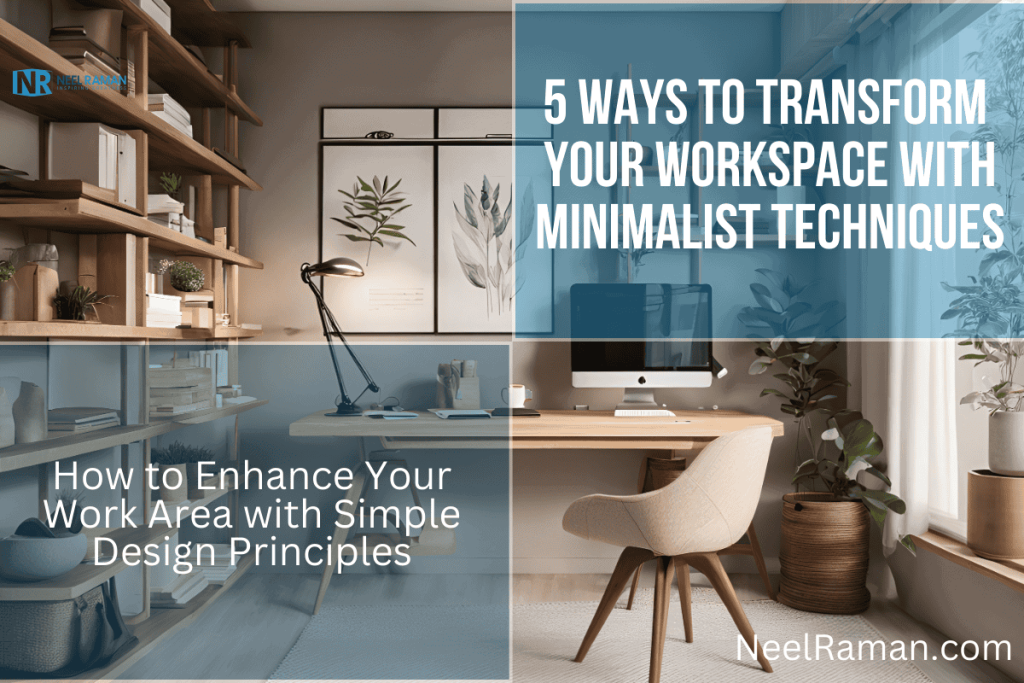
Benefits of a Minimalist Workspace
The advantages of adopting a minimalist workspace are numerous and profound. Most notably, it can lead to enhanced focus on core tasks. When distractions are minimized, individuals are better equipped to tackle their priorities head-on. This can be particularly beneficial in high-pressure scenarios, such as during critical project deadlines where every moment of clarity counts.
Moreover, a minimalist environment can foster increased creativity. With fewer distractions, you might find that your ideas flow more freely, allowing for innovative solutions and a deeper connection to your work. Studies in cognitive psychology support the idea that less clutter leads to more brain space for creative thought processes, showing a direct link between simplicity in your environment and originality in your output.
Lastly, many individuals report a greater sense of well-being in a minimalist environment. A serene workspace can create a calming atmosphere that promotes mental health, leading to higher job satisfaction and overall happiness. When your space is aligned with your values and needs, it becomes a catalyst for both productivity and personal fulfillment.
As you dive deeper into the concept of minimalism, you’ll uncover methods to create a workspace that not only reflects your style but also serves your creativity and efficiency. Consider experimenting with different layouts, furniture choices, and decorative elements to craft an environment that inspires and motivates you.
DISCOVER MORE: Click here to delve into minimalism
Embracing the Minimalist Approach
To fully harness the power of a minimalist workspace, it’s essential to embrace the philosophy of simplicity in all aspects of your environment. This goes beyond just reducing the number of objects on your desk; it’s about creating a holistic atmosphere that fosters focus, creativity, and efficiency.
Key Elements of a Minimalist Workspace
There are several crucial elements to consider when designing a minimalist workspace:
- Decluttering: Start by evaluating your environment. Remove items that do not serve a purpose or do not spark joy. This could be anything from outdated gadgets to knick-knacks that occupy valuable space. You might be surprised how much clearer your mind feels with fewer visual distractions.
- Functional Furniture: Choose pieces that encourage productivity. For example, a desk with adjustable height can promote better posture and potentially boost energy levels. Incorporate storage solutions, like wall-mounted shelves, to keep the floor space open and the surfaces tidy.
- A Unified Color Palette: Stick to a cohesive color scheme that resonates well with you. Neutral tones, such as whites, grays, and soft earth colors, can evoke a sense of calm and clarity while also providing a backdrop that enhances creativity. You could add pops of vibrant color through plants or artwork.
- Technology Management: Consider the technology you use daily. Invest in cable management solutions to keep cords organized. Utilize wireless devices when possible to further reduce visual clutter. Aim for a simplified tech setup that aligns with your workflow.
By paying attention to these aspects, you can cultivate a workspace that not only looks appealing but also functions effectively. Minimalism encourages you to be intentional with what you include in your space, leading to clearer mindsets and the freedom to focus on what truly matters.
The Psychological Impact
The mental benefits of a minimalist workspace extend far beyond aesthetics. Numerous studies illustrate the psychological impact of clutter on our mental health. Research from the University of California, Los Angeles found that physical clutter may lead to increased stress levels and decreased focus. This makes it clear that a simple, organized environment is more conducive to mental well-being.
Moreover, a minimalist workspace allows for greater introspection and creativity. With fewer items vying for your attention, you can dive deeper into your work, connecting ideas that might have been obscured by chaos. A 2019 study published in the Journal of Environmental Psychology highlighted that individuals working in uncluttered environments were more successful at brainstorming and generating higher-quality ideas compared to those in cluttered spaces.
As you explore the components of minimalism, you’ll realize that creating such a workspace isn’t just a trend—it’s a movement toward enhancing your creativity and efficiency. By investing time into shaping an intentional and mindful work environment, you lay the foundation for unlocking your full potential.
| Advantage | Description |
|---|---|
| Increased Focus | A minimalist workspace reduces distractions, allowing individuals to concentrate on their tasks and enhance productivity. |
| Enhanced Creativity | With fewer items vying for attention, your mind is free to generate innovative ideas and solutions, tapping into your creative potential. |
| Stress Reduction | An uncluttered environment contributes to a calm mindset, which is crucial for maintaining mental well-being while working. |
| Simplicity in Organization | Effective organization in a minimalist setup leads to quick access to resources, aiding in time management and reducing frustration. |
A minimalist workspace transcends mere aesthetics; it transforms the way we approach our daily tasks. It cultivates an environment that prioritizes essentials, fostering a culture of creativity and efficiency. As research continues to unveil the correlation between physical space and psychological impact, embracing simplicity emerges not just as a style choice but as an essential strategy for maximizing work output. Leverage the power of simplicity to unlock your true potential, making each working day not only productive but also fulfilling.
DIVE DEEPER: Click here to uncover the benefits of minimalist organization
The Role of Nature and Natural Light
Incorporating elements of nature into your minimalist workspace is another vital aspect that can significantly enhance both your creativity and efficiency. Numerous studies suggest that natural environments can have a remarkable impact on our mood and mental clarity. For instance, a report from the Human Spaces Global Report indicated that individuals working in environments with natural elements, including plants and natural light, exhibited a 15% boost in productivity and a noticeable increase in overall well-being.
Biophilic Design
This fascination with nature is encapsulated in the concept of biophilic design, which aims to connect people with nature through their surroundings. By incorporating elements such as indoor plants, natural materials, and ample light, your workspace not only becomes aesthetically pleasing but also promotes tranquility. Houseplants such as succulents and ferns not only serve as decor but also purify the air, creating a healthier atmosphere conducive to creativity.
Moreover, natural light is a powerful tool for enhancing cognitive performance and creativity. Research published by the National Institutes of Health shows that natural lighting can improve mood, focus, and even increase study performance by 12% to 25%. Utilizing large windows or light-filtering curtains can help maximize the amount of daylight in your workspace, making it feel more open and inviting.
Creating Zones Within the Space
Another defining characteristic of a minimalist workspace is the effective use of zones. Splitting your workspace into distinct areas dedicated to different tasks—such as a focused work zone, a creative brainstorming area, and a relaxation nook—can enhance your workflow and inspire creativity. This concept resonates with the idea of task-specific environments where each area is designed to facilitate a particular mode of thinking.
For example, while a sleek desk equipped with a computer may serve as your primary work zone, a cozy chair in a different part of the room can act as a spot for reading, reflecting, or engaging in less structured thinking. This separation fosters a mental association with the type of work you’re about to engage in, improving your ability to switch mindsets and increase productivity. A study from the Harvard Business Review confirmed that employees with access to varied workspaces demonstrated higher levels of engagement and creativity.
Limitations and Intentionality
Finally, creating a minimalist workspace requires a mindset of limitations and intentionality. Each item you introduce into your workspace should have a defined purpose or function. This not only includes physical items but also digital tools and applications. As we embrace digital minimalism, it’s critical to assess which technological tools genuinely enhance productivity while discarding those that detract from it. Keeping the number of active applications and browser tabs to a minimum can prevent overwhelming distractions and streamline your focus.
As one of the pioneers of minimalism, Joshua Becker, notes, “Minimalism is not about having less, it’s about making room for more of what matters.” By embracing this philosophy in your workspace, you can curate an environment that maximizes your creativity and efficiency, leading to more fulfilling work experiences.
DISCOVER MORE: Click here for tips on organizing your digital space
Conclusion
In an age where distractions and complexity abound, creating a minimalist workspace emerges as a powerful antidote to the chaos of modern work life. By prioritizing simplicity, you not only enhance your physical environment but also cultivate a mental space that encourages creativity and efficiency. The principles of minimalist design suggest that a clutter-free area filled with intentional decor, ample natural light, and elements of nature can lead to improved mood and productivity. As we have explored, the incorporation of biophilic design invigorates the workspace, bridging the gap between indoor productivity and outdoor serenity.
Furthermore, structuring your workspace into distinct zones facilitates focused thinking and creativity, allowing your mind to switch easily between tasks. By adopting a mindset that embraces limitations and intentionality, you can filter out distractions and hone in on what truly matters in your work. This conscious curation of your environment, from nurturing houseplants to optimizing your digital landscape, sets the stage for not just an enhanced work experience but also personal growth and clarity.
Ultimately, embracing a minimalist workspace isn’t merely about removing unnecessary items; it’s about fostering a holistic approach to your work life. As evidenced by empirical research and emerging design philosophies, the transformation of your surroundings can lead to profound changes in your creative output and overall satisfaction. Dive deeper into the minimalist movement and discover how simplicity can truly fuel your ambitions and unlock your full potential.
